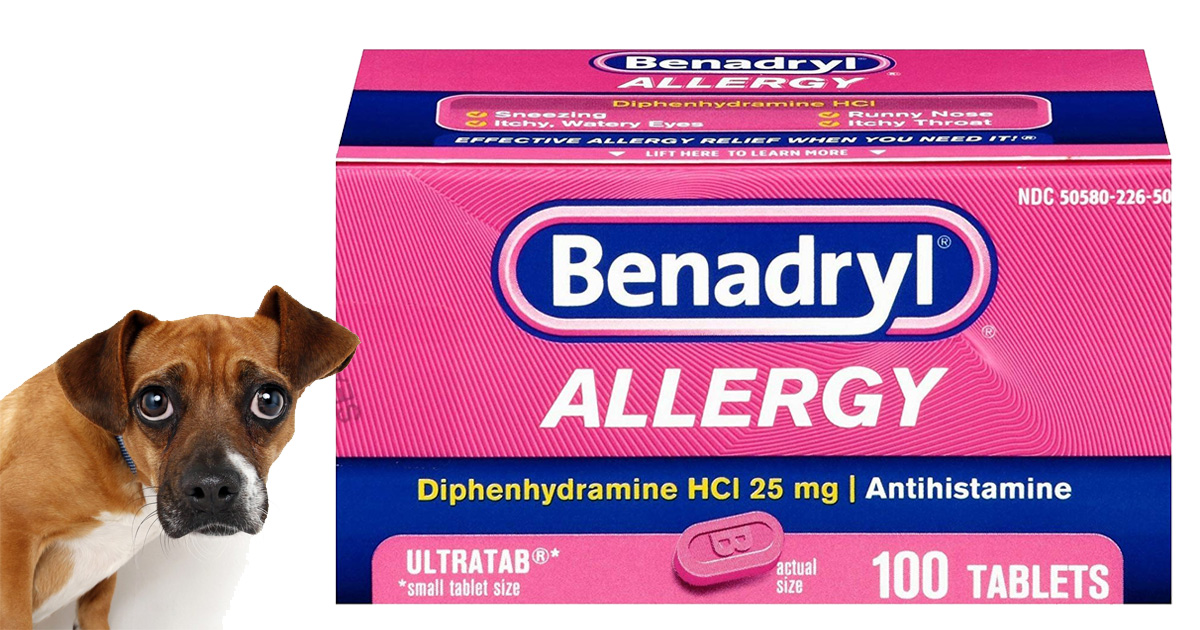PLEASE NOTE: It’s always best to contact your veterinarian for guidance before administering any medication to your pet.
Benadryl, also known by its generic name, diphenhydramine, is one of the few over-the-counter drugs that veterinarians routinely have owners administer at home.
You might be looking for Benadryl to ease your dog’s anxiety, or maybe your dog was stung by an insect and is having a mild allergic reaction.
While Benadryl is generally well tolerated by dogs and has a wide safety margin, it’s not necessarily the answer to your dog’s issue.
Benadryl can interact with other medications that your pet may be on (such as anticoagulants and other depressants for the nervous system), making it pertinent to speak with a vet prior to administering.
Find out when Benadryl is effective and safe and when your dog needs a different treatment. Here are a few things you should keep in mind before giving your dog Benadryl.
1. Can Dogs Take Benadryl for Anxiety?
You might have heard that Benadryl can be given to dogs to help with travel anxiety or dogs that are scared of fireworks and thunderstorms. Benadryl has some efficacy in the prevention of motion sickness in dogs and as a mild sedative, but the effects are not the same as with people.
If your dog has anxiety, it’s best to talk with your veterinarian to determine a course of treatment, as it might involve making changes to your dog’s environment, behavioral training, or tools such as anxiety vests and pheromones.
Also, a small percentage of dogs and cats can have the opposite reaction to Benadryl, causing hyperactivity instead of sedation. So it’s important to trial it at home prior to using it for travel.
2. Can Benadryl Be Used for Dog Allergies?
Benadryl is an antihistamine that blocks the H-1 receptors on smooth muscle and blood vessels. Taken orally, Benadryl can be mild to moderately effective for dogs experiencing mild allergic symptoms.
Vets commonly use it to treat environmental allergies and allergic reactions to insect bites or stings. It can also be used as a pre-treatment for possible vaccine reactions.
But if your pet is having an acute allergic reaction with facial swelling or difficulty breathing, take them straight to the vet. Many allergic diseases also require a combination of allergy medicine and treatment of underlying infections.
3. Benadryl Safety: Which Dogs Can’t Have It?
By and large, Benadryl is very well-tolerated in dogs with few side effects. It remains one of the safest over-the-counter drugs that veterinarians frequently reach for and recommend for their canine patients.
But the reason why you still need to check with your veterinarian is to ensure that it is safe for your dog to take Benadryl, because there are safety risks if your dog has certain health conditions. Some instances in which it should not be used include:
- Low blood pressure
- Cardiac conditions (cardiovascular disease)
- Glaucoma
- Currently pregnant
4. What’s the Benadryl Dosage for Dogs?
The standard dosage for oral Benadryl for dogs is 1 mg per pound of body weight, given 2-3 times a day. Most diphenhydramine tablets are 25 mg, which is the size used for a 25-pound dog.
But the safest way to give the proper dose is to ask your veterinarian. In addition, many formulations are combined with other medications such as Tylenol, so make sure Benadryl tablets contain only diphenhydramine.
